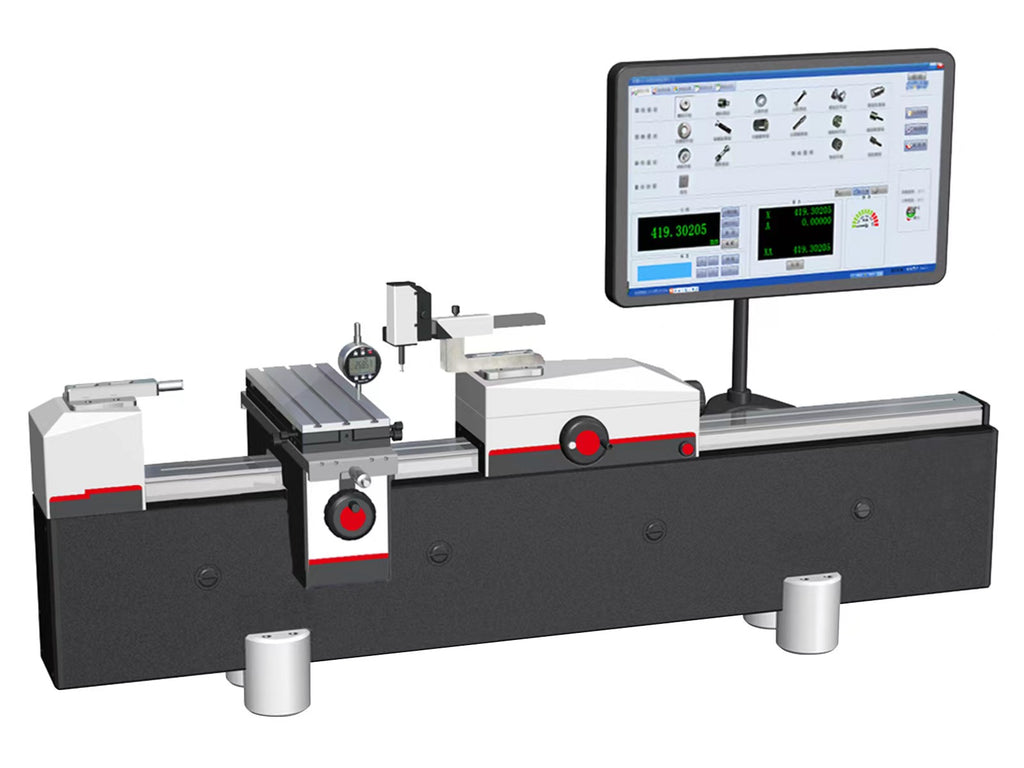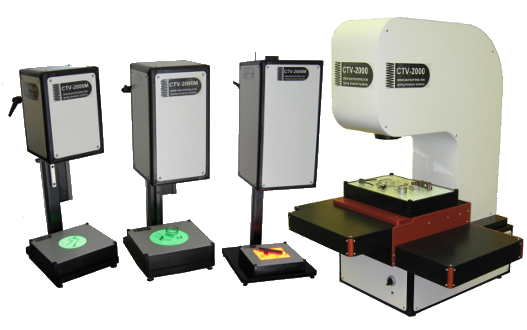FAQs about optical measurement system adoption
FAQs about optical measurement system adoption
Blog Article
The Duty of Optical Dimension Solutions ahead of time Metrology Methods
Optical dimension systems have changed metrology, bringing a degree of precision that was once unbelievable. You could be shocked to learn just how these innovations, based on fundamental concepts like reflection and interference, are used across different industries. Their non-contact capabilities not just boost precision yet also simplify processes. As you discover better, you'll discover exactly how these systems are forming the future of measurement and top quality control.
The Development of Metrology: A Historic Perspective
As you discover the history of assessment, you'll find that its advancement shows mankind's quest for accuracy and standardization. From old human beings utilizing body components as systems of measurement to the advancement of standard weights and procedures, each step reveals our need for precision. The Egyptians constructed the pyramids using accurate measurements, while the Romans advanced engineering with their sophisticated measuring devices.
During the Renaissance, scientific innovations shifted the focus towards more empirical approaches, paving the way for contemporary metrology. The introduction of the metric system in the late 18th century noted a considerable turning point, developing universal criteria. Throughout the 20th century, technical innovations additionally changed metrology, enabling highly exact dimensions in different areas.
Today, assessment continues to advance, incorporating electronic technology and automation. This background highlights not just the relevance of dimension however also our unrelenting quest of improving precision and uniformity in our increasingly complex world.
Concepts of Optical Measurement Systems
Comprehending the principles behind optical dimension systems is important for precise lead to width. You'll intend to think about essential optical principles, dimension accuracy factors, and effective system calibration strategies. Each of these aspects plays a crucial function in guaranteeing your measurements are reliable and accurate.
Fundamental Optical Concepts
While checking out optical measurement systems, you'll encounter fundamental optical principles that develop the backbone of precise information procurement. Light acts in foreseeable methods, and comprehending these behaviors-- like representation, diffraction, and refraction-- is crucial for efficient measurements. By grasping these concepts, you'll be equipped to utilize optical technologies properly, paving the method for innovations in width and ensuring your measurements are both repeatable and reliable.
Dimension Precision Aspects
To accomplish high dimension precision in optical systems, numerous elements come into play, influencing the dependability of your outcomes. Premium lenses and detectors decrease aberrations and sound, guaranteeing your measurements are exact. By dealing with these factors, you can enhance the general performance of your optical measurement systems, leading to even more accurate and reputable outcomes in your metrology applications.
System Calibration Techniques
Accomplishing high measurement accuracy is just part of the equation; correct system calibration techniques are similarly essential in optical dimension systems. To ensure your system supplies reputable outcomes, you need to on a regular basis calibrate it utilizing basic recommendation materials. Beginning by adjusting the optical components, like lenses and mirrors, to decrease systematic mistakes. Next off, use well-known dimensions to confirm the system's outcome and make needed corrections. It's additionally important to represent ecological aspects-- temperature and moisture can impact measurements. Apply a regular calibration timetable to keep consistency in time. Lastly, record all calibration procedures and results; this will aid you track efficiency and resolve any kind of drift in accuracy. With these techniques, you'll boost the reliability of your optical measurement system.
Secret Technologies Behind Optical Measurement
Optical measurement systems rely upon numerous essential technologies that improve precision and effectiveness in metrology. One essential technology is interferometry, which utilizes the interference of light waves to measure tiny displacements and surface area irregularities with extreme precision. You'll additionally locate laser scanning systems, which record in-depth 3D information of things swiftly, making them invaluable for dimensional analysis.
Additionally, CCD and CMOS sensors play a significant duty in transforming light into electrical signals, enabling high-resolution imaging and precise measurements. Advanced algorithms for picture handling better improve dimension precision by examining data in genuine time, removing noise and enhancing functions.
Ultimately, optical fiber provide flexibility and the ability to determine in difficult environments while keeping signal stability. By leveraging these modern technologies, you can attain premium cause your metrology tasks, making certain that your dimensions are both accurate and trustworthy.
Applications of Optical Dimension in Sector
As markets significantly demand accuracy and performance, the applications of optical measurement systems have become crucial throughout different fields. In manufacturing, these systems assist you keep track of dimensions and resistances in real-time, making sure quality assurance without taxing manual checks. In the automobile market, optical measurements assist in lining up components with accuracy, boosting safety and security and performance.
In electronic devices, you're using optical techniques to inspect minute functions on motherboard, discovering problems that could bring about failures. The aerospace industry gain from non-destructive screening methods, enabling you to assess products and elements without jeopardizing their integrity.
Optical measurement likewise plays a crucial role in textiles, ensuring fabric dimensions meet exact specs. optical measurement systems. With their capacity to supply high-resolution data rapidly, these systems equip you to make educated decisions, streamline procedures, and eventually drive innovation throughout your industry
Enhancing Accuracy and Efficiency in Dimensions
When you consider enhancing precision in measurements, accuracy in your measurement techniques is important. By streamlining these processes, you can attain quicker outcomes without compromising high quality. Allow's check out how taking on innovative optical dimension systems can elevate both precision and effectiveness in your work.
Accuracy in Dimension Techniques
Accuracy in measurement strategies is Discover More crucial for achieving dependable cause metrology, especially because small discrepancies can result in significant mistakes. By using advanced optical measurement systems, you can boost the accuracy of your dimensions. These systems give high-resolution data that aid you discover also the smallest variants in measurements. When you adopt these innovations, you minimize unpredictabilities and improve repeatability in your procedures. Additionally, accurate measurements enable you to maintain quality assurance, ensuring that products fulfill stringent specifications. This not only increases your reliability yet likewise improves customer satisfaction. Spending in accuracy measurement tools eventually brings about enhanced performance, decreased waste, and enhanced manufacturing cycles. Accepting these methods will change your method to assessment, producing remarkable results.
Streamlining Dimension Procedures
To visit our website improve precision and performance in dimensions, improving your measurement procedures is vital. Begin by embracing optical measurement systems that provide real-time information, decreasing the moment invested on manual recording. These systems typically integrate flawlessly with existing software program, allowing you to automate information collection and evaluation.
Next, systematize your dimension protocols. By implementing consistent treatments, you minimize irregularity and boost repeatability. Do not fail to remember to consistently calibrate your tools to assure its accuracy.

The Impact of Optical Dimension on R & D
As researchers endeavor to push the limits of innovation, optical dimension systems have ended up being vital devices in the development procedure. These systems supply you with exact, real-time data that boosts your capacity to evaluate intricate materials and frameworks. In various fields, from biotechnology to aerospace, you count on optical dimensions to optimize designs and enhance item performance.

With high-resolution imaging and non-contact methods, you can reduce example disruption, enabling for even more accurate results. This ability to capture minute information accelerates your R&D cycle, allowing you iterate layouts rapidly and efficiently. In addition, optical dimension promotes partnership throughout techniques, as the data produced is often quickly interpretable and shareable.
Inevitably, incorporating optical measurement systems right into your research study not just enhances performance but additionally grows your understanding of visit their website the phenomena you research. By leveraging these sophisticated methods, you're better outfitted to innovate and stay ahead in an affordable landscape.
Future Fads in Optical Measurement Equipments
With the fast improvement of innovation, you're most likely to see substantial shifts in optical dimension systems that will redefine their application throughout numerous markets. You'll notice an approach boosted automation and integration of expert system, enabling real-time data analysis and enhanced accuracy. Miniaturization is one more trend; portable devices will certainly enable measurements in tighter areas, making them ideal for fields like aerospace and biomedical applications.
Anticipate to see systems that can operate in difficult environments, offering trusted dimensions in extreme conditions. As these innovations converge, you'll locate that optical measurement systems not only enhance accuracy but likewise simplify workflows, eventually driving technology and efficiency in your projects.
Frequently Asked Inquiries
How Do Optical Measurement Systems Contrast to Typical Dimension Techniques?
Optical dimension systems supply higher precision and faster results contrasted to traditional techniques. You'll discover they record more data points properly, reducing human error and boosting integrity, making them a favored option in different applications.
What Industries Advantage Most From Optical Measurement Systems?
You'll discover sectors like aerospace, automotive, and electronics benefit most from optical dimension systems. These fields count on specific measurements to ensure top quality and efficiency, enhancing effectiveness and lowering costs through innovative technology.

Are Optical Dimension Equipments Expensive to Carry Out?
Optical measurement systems can be costly to carry out, however their precision and effectiveness usually validate the expense. Purchasing such technology can bring about considerable lasting cost savings and improvements in quality throughout different applications.
What Abilities Are Needed to Run Optical Measurement Solutions?
To run optical dimension systems, you'll require strong logical skills, interest to information, and efficiency in software application tools. Knowledge with optics and an understanding of dimension concepts will also boost your effectiveness and performance.
Exactly How Do Environmental Elements Impact Optical Measurements?
Environmental aspects like air, temperature, and humidity quality can misshape optical dimensions. You'll observe variants in precision due to light interference or refraction. optical measurement. Maintaining secure problems is vital for specific and reliable optical dimension results
Conclusion
In summary, optical measurement systems are reinventing assessment by providing unrivaled accuracy and performance. As you check out future fads, you'll see just how the integration of AI and automation will continue to raise dimension practices, driving advancement and enhancing top quality control.
Accomplishing high dimension accuracy is only part of the formula; appropriate system calibration methods are equally crucial in optical measurement systems.When you think concerning improving accuracy in dimensions, precision in your dimension techniques is essential. By utilizing innovative optical measurement systems, you can boost the accuracy of your measurements.To boost precision and effectiveness in dimensions, streamlining your measurement processes is essential. Exactly How Do Optical Dimension Systems Contrast to Typical Measurement Techniques?
Report this page